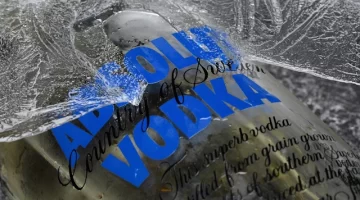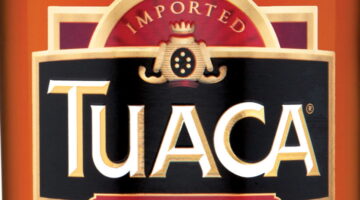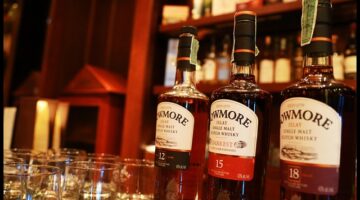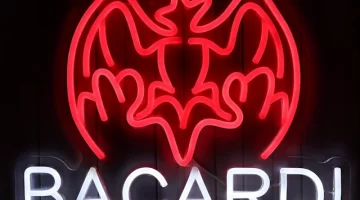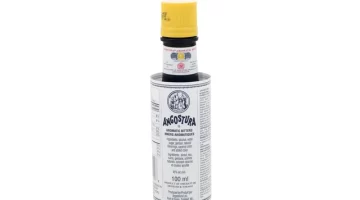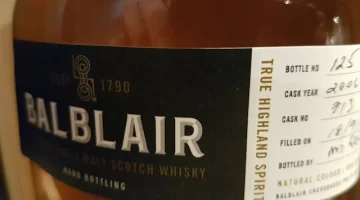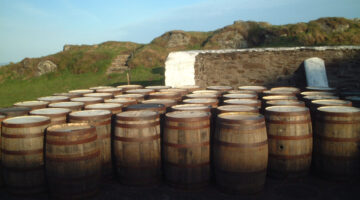Bourbon Justice Book Review
Travel Distilled reviews the book Bourbon Justice which tells the story of bourbon through how it affected the law in the USA, and how much we owe to the booming bourbon industry of the 19th century.
There must have been more – and more interesting – books written about bourbon than almost any other spirit.
Bourbon Justice Book Review
I’ve previously reviewed Bourbon Curious and Bourbon Empire, both of which are excellent reads, and highly recommended. Now comes Bourbon Justice, which takes the original approach of telling the story of bourbon through the legal system, and showing how much impact the bourbon business has had on law-making in America. That’s explained in the sub-title: How Whiskey Law Shaped America.
The Author
Brian Haara is the perfect man for the job as he both practices law in a business litigation firm and writes about bourbon, including on his blog Sipp’n Corn. The book also has the benefit of an Introduction by bourbon’s number one expert author, Fred Minnick.
The connection between bourbon and the law is clear when we’re only four pages into the book and learn that bourbon was responsible for the USA’s first consumer protection law, the Bottled-in-Bond Act of 1897. This was brought in to deal with so-called rectifiers, who were using all kinds of things, including hazardous substances such as sulfuric acid, to add to rotgut whiskey and pass it off as bourbon.
The booming bourbon industry in the late 19th century also led to laws to protect businesses, as well as the consumer. It was because of bourbon that laws were introduced to cover such topics as trade-mark protection, trade names, whether a business could use a family surname or not, and laws dealing with unfair competition. These laws applied across the board to all business, but it was bourbon that first made them necessary. As the author says:
“Bourbon distillers have always found the right balance between innovation and tradition and mixing Kentucky charm with cutthroat litigation, which makes telling the history of America through the lens of bourbon lawsuits all the more entertaining.”
Later in the book the author describes how the distilling of bourbon was also responsible in large part for the introduction of working safety standards and environmental protection laws. We’ve a lot to be grateful to bourbon for, not just its very existence.

What is Bourbon?
There’s an interesting and occasionally amusing look at the legal definition of bourbon, too. In order to be called bourbon, the spirit has to be stored in a ‘charred new oak container’. The author points out that it says nothing about a barrel, so you could store it in a bucket if you wanted to, provided it was made of charred new oak. He also points out that it says nothing about the type of oak either. It doesn’t have to be American oak, it doesn’t have to be white oak. The container can be any size, too.
Some people believe that bourbon needs to be aged for two years. It doesn’t. If it’s aged for two years it becomes ‘straight bourbon’, but if less than that then it’s just bourbon. There’s no minimum time to store it, either. You could pour the spirit into a barrel for a few seconds, empty it out again, and it has magically become bourbon. Of course it won’t taste as good, but there’s nothing to stop the unscrupulous person from doing it.
Small Batch Bourbon
So, what is small batch bourbon? Well, it’s anything a distiller wants it to mean as, again, there is no legal definition of the term. That’s one of the great uses of a book like this, it educates you about what you’re buying, or what you might think you’re buying. Similarly the word ‘craft’ is meaningless, and the author says bluntly that the word handmade should be ignored. So, the biggest distillers in the world could produce a million barrels of a bourbon, call it ‘handmade craft bourbon’ and they wouldn’t be breaking the law.
The Bourbon Brand
So, where did the phrase ‘brand name’ come from? From branding cattle? That’s what I would have thought, but no. It’s bourbon again. In the early 1800s federal law demanded that: ‘the name of the distiller shall be stamped or burned upon the head of every package of distilled spirits put into bonded warehouses, and this must not be erased until the package is empty.’
Distillers also started branding their barrels as a way of marking them, and the phrase ‘brand name’ came into common usage. And, just as an aside, the branding of cattle wasn’t something introduced in the American West. The Ancient Egyptians were branding their animals almost 5,000 years ago.

Cases of Bourbon
The book is full of entertaining facts and anecdotes, and information of interest to the trivia-lover, like me. The only down side is that from time to time the author describes a court case in minute detail, the kind of detail that might be of interest to the lawyer, but had me fast-forwarding to the end of the case. But that apart, it’s a thoroughly enjoyable read, and a bourbon book that is definitely unique.
Buying Bourbon Justice
You can find Bourbon Justice on Amazon.
Buying Bourbon Justice
You can find Bourbon Justice on Amazon.




